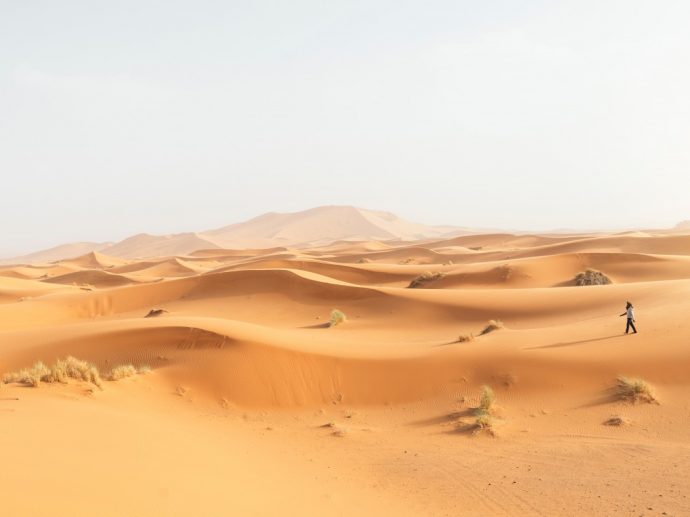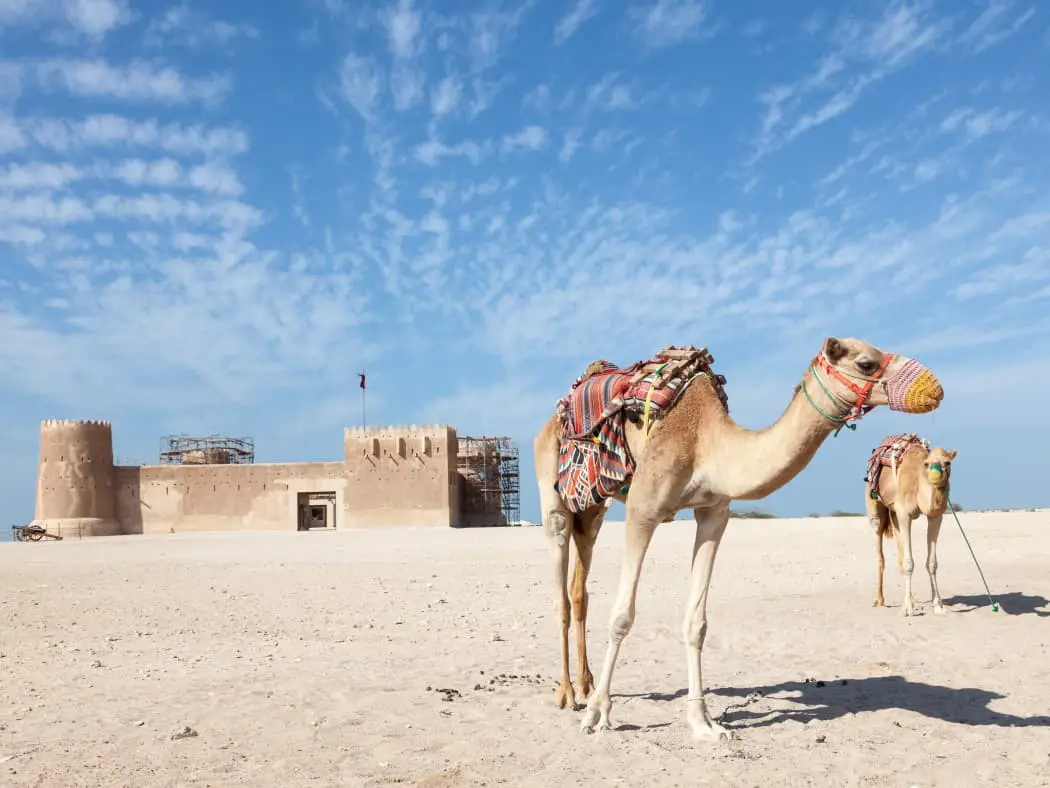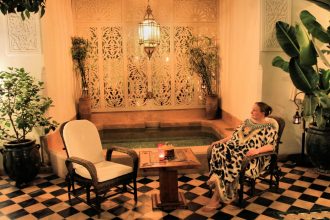The Arabian Peninsula is a mysterious land of vast deserts, remote mountains and ancient cultures, yet few who visit ever get further than the bright lights of the big cities. Beyond Muscat, Dubai and Riyadh there are countless adventures waiting to be enjoyed for those who are prepared for adventure. If camping out in the desert beneath a million stars, exploring giant craters and swimming in turquoise waterfalls sounds like fun, then this is for you.
Here are some of the most unique outdoor experiences you can have in the Arabian Peninsula:
Darbat Waterfalls, Oman
Oman is a beautiful country, full of deep ocean fjords, stunning architectural buildings and rocky mountains worthy of any Instragram feed. But head a little further into the interior and you’ll come across hidden gems known only to locals and a few intrepid tourists. What could be better on a hot day than plunging into the cool waters of a natural pool beneath a mesmerising cascade falling from the rocks high above?
When the rains have come in Wadi Darbat, water races over the edge, plummeting down to the Salalah Plain far below. This is a truly incredible sight, made all the more special as it doesn’t happen every year.
This is a great area for hiking too, and with ample parking, public toilets and even food stalls, you can easily spend the whole day here if you wish. It is possible to walk to the top of the waterfall to discover further pools and dramatic views.
How to get there: The Darbat wadi is located a few kilometres from Taqa, a coastal settlement in the Dofar Region. Visits to the Darbat Waterfalls are usually done on a day tour, or as part of a longer guided trip on the way to Salalah.
Where to stay: Most visitors to Oman fly into Muscat and hire a car or join an excursion to explore the coast and interior of this beautiful country. The waterfalls will be visited during the tour rather than being an overnight destination in themselves.
Where to eat: Your tour guide will recommend places to eat along the way, and when you reach Salalah you’ll be spoilt for choice when it comes to restaurants. If you’re staying in a resort in Salalah, eating there is often a great option.
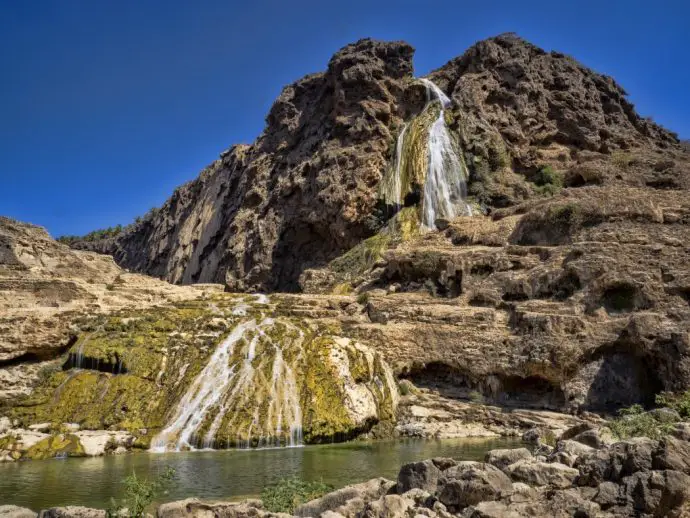
Al Wahbah Crater, Saudi Arabia
Situated in the centre of a flat desert area, the Al Wahbah Crater is always a bit of a surprise for anyone who ventures into this region. This vast crater is the result of a meteor strike, which was later exposed after a powerful volcanic eruption changed the landscape here forever. At 4 kilometres wide and around 250 feet deep, this unusual natural phenomenon can be seen from space!
On the crater floor are bright salt pans, making this lunar landscape one of the most unusual sights in Saudi Arabia, whilst up on the rim vegetation flourishes, not something you often see in a desert! A climb up to the rim is highly recommended for the surreal views, and can be achieved by anyone of reasonable fitness with sturdy footwear.
How to get there: Whilst remote the Al Wahbah Crater is now relatively accessible, with proper roads and even a campsite for visitors. Located two hours north of Taif, or four hours from Jeddah, Al Wahbah Crater tours are a must when visiting the country. Tourism in Saudi Arabia is still in its infancy, but with the country opening up sites and access for visitors, it’s a hot new destination high on many bucket lists. Most airlines makes it easy to arrange flights, and once in the country, guided tours are the best way to get around.
Where to stay: You’ll need to base yourself in either Taif or Jeddah to visit the Al Wahbah Crater. Both cities have internationally recognised hotel chains as well as local options for something more authentic.
Where to eat: Both Taif and Jeddah have a plethora of top notch restaurants serving a range of local dishes. this is a great place to come if you want learn more about the Saudi cultural through its cuisine. Ask your hotel to book a table for you – they’ll be able to recommend their favourite hotspots.
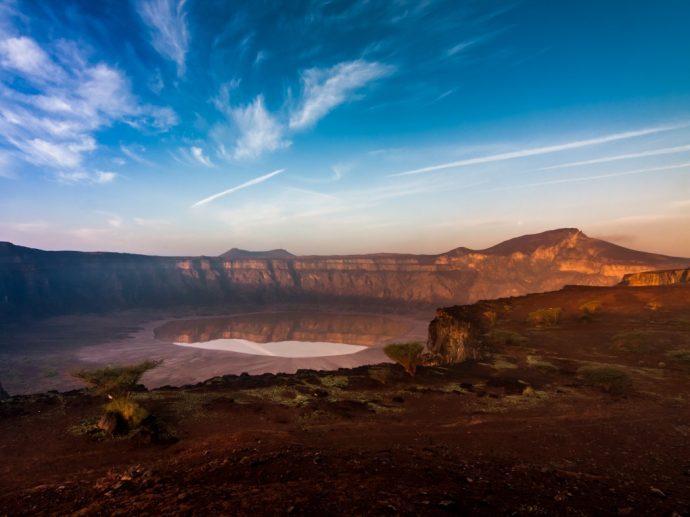
Al Madam Ghost Town, UAE
This abandoned desert village near the town of Al Madam is a place of legends and ghosts. Built in the 1970s for the Al Kutbi tribe, this tiny hamlet had brightly-coloured homes and a mosque. Yet it was soon abandoned with hair-raising tales of jinns driving the inhabitants away.
Today this eerie hamlet has been taken back by nature and swamped by the surrounding dunes as they encroach with the wind. It’s a photographer’s dream similar to Kolmanskop in Namibia, and an exciting excursion in the UAE for those who want to experience something a little different.
Inside the dwellings you’ll see reminders of civilisation, with peeling wallpaper and chipped tiles still lingering on. Most interiors are now full of sand, and home to several desert-dwelling critters that scuttle into dark corners when visitors approach.
How to get there: Al Madam ghost town is just 37 miles from Dubai so it’s really easy to get here on a day trip by either hiring a vehicle, or booking a car and driver. You can also visit on a day tour from Abu Dhabi – it takes just over 2 hours to get there. Part of the final stretch is on desert sand roads so if you haven’t driven on this type of terrain before it’s wise to join an excursion.
Where to stay: As Al Madam is so close to Dubai, your best option is to book a hotel in the city. Popular districts to base yourself in are the Dubai Marina area, Downtown, and of course the famous Palm Jumeirah if you fancy a bit of a beach break. If you’re staying in Abu Dhabi, the best areas for first-time visitors to stay in are Corniche, Bab Al Behr and Saaidayat.
Where to eat: Dubai and Abu Dhabi are home to some of the best restaurants in the world, serving everything from regional specialities to glamourous international cuisine. It’s a good idea to reserve a table well in advance through Square Meal UAE, as some of the top eateries can be booked up months in advance.
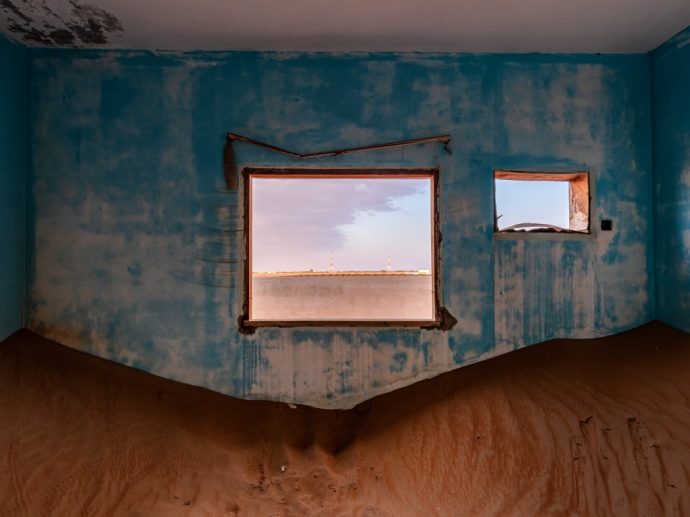
Kuwait Desert, Kuwait
For many, the vision of the Arabian Peninsula is one of dazzling expanses of never-ending desert, with golden undulating dunes and the clearest skies you’ll have ever seen. The desert stretching out on all sides from Kuwait City is the perfect place for an overnight camping trip. Adventurers can enjoy a camel trek through the sea of sand, watching as the blazing orange sun sets on the horizon, as well as quad biking excursions and dune bashing in SUVs to get your heart racing.
Kuwait desert tours generally run over winter from November to March when temperatures are cooler. Trips often stop at the famous oil fields along the way, something you’ll have seen many times in the news some years ago, and quite a sight to behold. When night falls it’s time to feast around the campfire, enjoying traditional local cuisine and storytelling, before turning in for the night in your new camp home.
How to get there: Kuwait is really easy to reach with multiple flight routes available from several airlines. Once you’ve spent some time in Kuwait City, join a guided overnight tour into the surrounding desert. This can be arranged through your hotel, or via a private tour company prior to your arrival.
Where to stay: As this is an overnight tour, you’ll be spending the night in the desert like a true nomad! The experience is similar to the desert camps in Morocco, with similar activities to keep you entertained.
Where to eat: Meals are included on your tour, and you’ll be eating dinner around the campfire in the evening for a really authentic experience.
